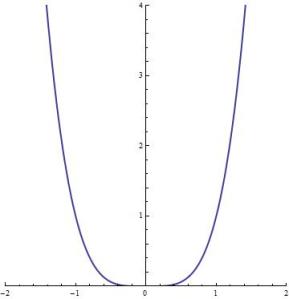In the previous posts of this series, I carefully considered the definition of . Let’s now repeat this logic to consider the definition of
, where
is an integer. We begin with
even.
A typical case is ; the graph of
is shown below.
The full graph of fails the horizontal line test if
is even. Therefore, we need to apply the same logic that we used earlier to define
. In particular, we essentially erase the left half of the graph. By restricting the domain to
, we create a new function that does satisfy the horizontal line test, so that the graph of
is found by reflecting through the line
.
If is even, then
means that
and
. In particular, this is impossible for real
if
.

We now turn to the case of odd. Unlike before, the full graph of
(in thick blue) satisfies the horizontal line test. Therefore, there is no need to restrict the domain to define the inverse function. (shown in thin purple).
In other words,
If is odd, then
means that
. There is no need to give a caveat on the possible values of
.
In particular, and
are both undefined since there is no (real) number
so that
or
. However,
is defined and is equal to
since
.



One thought on “Inverse Functions: nth Roots (Part 7)”